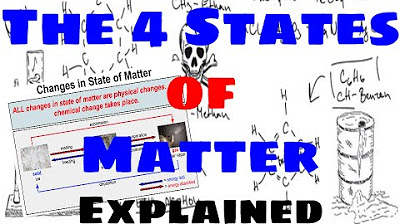How Papyrus was Made | Ancient Egypt for Kids | Learning Made Fun
Summary
TLDRIn this educational video, Mr. Bradley introduces the ancient Egyptian invention of papyrus, a paper-like material made from the papyrus plant that grew along the Nile. The script humorously explains the process of papyrus production, from harvesting the reed to weaving and drying it into a flexible and durable writing surface. Papyrus was not only used for writing hieroglyphics but also for creating various items like boats and baskets. The video provides a fascinating glimpse into the ingenuity of ancient Egyptians and the enduring legacy of papyrus.
Takeaways
- 📜 Papyrus was an early form of paper used by ancient Egyptians, made from the papyrus plant that grew along the Nile River.
- 🌱 The papyrus plant was not only used for paper but also for making boats, shoes, baskets, and other items.
- ✍️ Papyrus was easier to write on than stone, which was the previous material used for carving hieroglyphics.
- 🔍 The papyrus plant's stems were cut into strips, and the green outer part was removed to access the inner part, which was used for making papyrus.
- 💧 The inner part of the papyrus stem was soaked in water to remove the water content, making it more suitable for paper production.
- 🔨 Ancient Egyptians used a hammer to remove water from the papyrus strips, a process that has been modernized with a pressing bin.
- 🧪 The papyrus strips were soaked for a week to reduce the sugar content, making them sticky and able to stick together without glue or chemicals.
- 🌀 The strips were then weaved horizontally and vertically, creating a layered structure that would form the papyrus paper.
- 🔄 The weaved papyrus was left to dry and pressed for another week, a process that could be done with heavy crops in ancient times or with modern machines.
- 🎨 Once dried, the papyrus accepted various colors, including cold colors, water, oil, and gold without any issues.
- 📚 The final product, papyrus paper, was used for writing hieroglyphics and has been preserved for thousands of years, as seen in Egyptian museums.
Q & A
What was the primary material used by ancient Egyptians for writing before papyrus?
-Before the use of papyrus, ancient Egyptians primarily carved hieroglyphics into rock walls.
What is papyrus?
-Papyrus is a paper-like material that was used by the ancient Egyptians, made from the papyrus plant which grew in the River Nile.
What was the scientific name of the reed used to make papyrus?
-The reed used to make papyrus was also called 'papyrus', which is a bit of an anti-climax as it shares the same name with the material it produces.
Why did ancient Egyptians switch from using rocks to papyrus for writing?
-The ancient Egyptians switched to papyrus because it was much easier and quicker to write hieroglyphics on papyrus than carving them into rocks.
What are the other uses of the papyrus plant mentioned in the script?
-The papyrus plant was used not only for making papyrus paper but also for creating boats, shoes, baskets, and more.
What was the process of making papyrus paper from the papyrus plant?
-The process involved cutting the stems of the papyrus plant into strips, removing the water, soaking them in water to strengthen and make them flexible, and then weaving the strips horizontally and vertically to form a sheet which was left to dry.
How did the ancient Egyptians remove water from the papyrus strips?
-Ancient Egyptians removed water from the papyrus strips by beating them with a hammer, a process that was later modernized with a ruling bin.
Why did the ancient Egyptians soak the papyrus strips in water for a week?
-Soaking the papyrus strips in water for a week helped to reduce the sugar content from twenty percent to five percent, making the strips sticky and able to stick together without glues or chemicals.
How did the ancient Egyptians weave the papyrus strips to form a sheet?
-They laid some strips horizontally and some vertically, creating a grid-like pattern, and then pressed them together to form a sheet of papyrus.
What modern equipment is used in the process of making papyrus as shown in the script?
-A modern machine is used to press the woven papyrus strips together after they have been arranged in a grid pattern, replacing the heavy crops used in ancient times.
Why was papyrus a significant improvement over rock for writing hieroglyphics?
-Papyrus was lighter, more portable, and allowed for easier inscription of hieroglyphics compared to the labor-intensive process of carving on rock.
How long did the entire process of making papyrus paper take according to the script?
-The entire process took two weeks; one week for soaking in water to reduce sugar content and another week under pressure to dry.
What is the significance of the papyrus paper's ability to accept various types of colors?
-The ability of papyrus to accept various types of colors, including cold colors, water, oil, and golden colors, made it a versatile material for writing and art.
Outlines

Cette section est réservée aux utilisateurs payants. Améliorez votre compte pour accéder à cette section.
Améliorer maintenantMindmap

Cette section est réservée aux utilisateurs payants. Améliorez votre compte pour accéder à cette section.
Améliorer maintenantKeywords

Cette section est réservée aux utilisateurs payants. Améliorez votre compte pour accéder à cette section.
Améliorer maintenantHighlights

Cette section est réservée aux utilisateurs payants. Améliorez votre compte pour accéder à cette section.
Améliorer maintenantTranscripts

Cette section est réservée aux utilisateurs payants. Améliorez votre compte pour accéder à cette section.
Améliorer maintenantVoir Plus de Vidéos Connexes

The Four States of Matter - Explained

Lab Equipment - Explained

3. Gr 11 Life Sciences - Population Ecology - Theory 3 Mark Recapture Method

4. Gr 11 Life Sciences - Population Ecology - Worksheet 1

PENJASKES KELAS X - SOFTBALL

Introduction to Culture [AP Human Geography Review Unit 3 Topic 1]

Menentukan Mr ( massa molekul relatif )
5.0 / 5 (0 votes)
